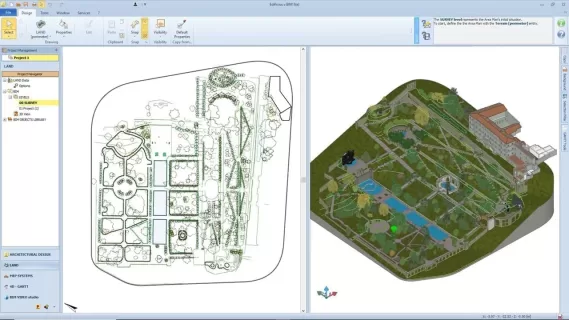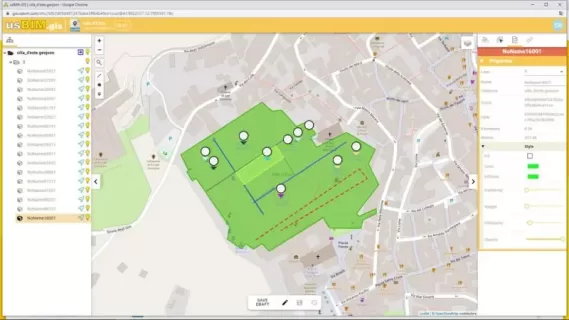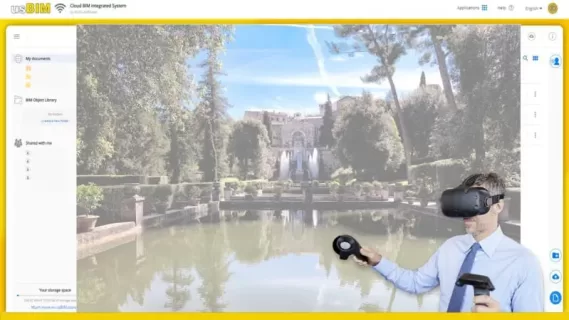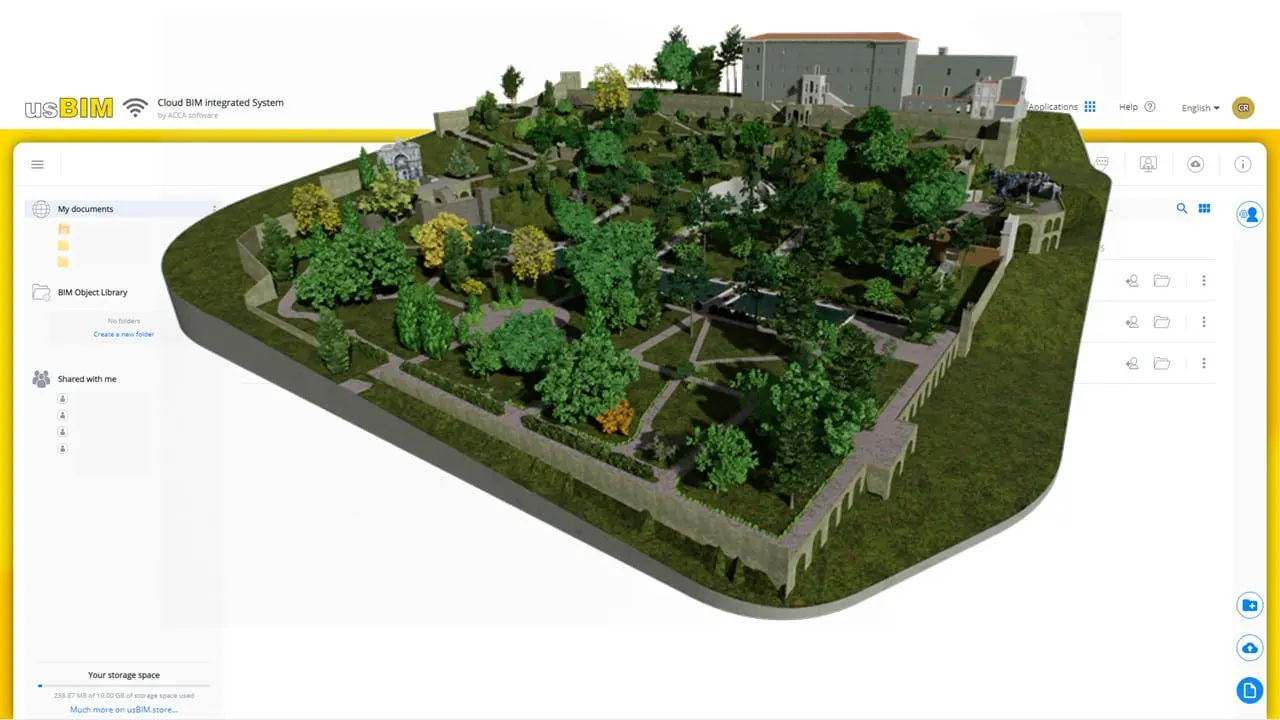BIM revolutionizes the management of historical parks and gardens, improving preservation, maintenance, and accessibility. Discover how the innovative usBIM helps the process
Historical parks and gardens are true open-air museums, preserving invaluable cultural heritage. Their management requires an integrated and meticulous approach, as that applied to architectural heritage sites.
By leveraging BIM technology, historical park management can reach a new level of precision, facilitating not only preservation and maintenance but also promotion and accessibility.
Let’s explore how the BIM management system usBIM enhances the experience from 3D modelling to virtual tours.
Advantages of BIM in Historical Park Management
Building Information Modeling (BIM) offers numerous advantages for managing historical parks, enhancing conservation efforts and operational efficiency.
Here are some key benefits:
- enhanced digital documentation: BIM allows for precise 3D modelling of historical structures, providing detailed documentation useful for restoration and tourism planning;
- improved preservation planning: it enables the analysis of data to assess structural integrity, identifying vulnerabilities and informing restoration strategies;
- collaboration and interoperability: BIM facilitates information sharing among various disciplines involved in park management, improving coordination of conservation efforts;
- real-time monitoring and maintenance: integrating IoT devices with BIM allows for monitoring the conditions of historical structures, enabling timely interventions when issues arise;
- restoration scenario modelling: BIM supports the visualization of different restoration scenarios, helping to preserve the original character of historical buildings.
Creating the 3D model with Edificius
The first step in implementing BIM in a historical park is creating a 3D model that accurately reflects reality.
This process begins with a geometric survey of the existing conditions, using advanced technologies such as drones and laser scanners. The data collected is then processed and used to create the 3D model through the use of an architectural design software, such as Edificius by ACCA software.
With the HBIM tools, users can recreate architectural elements from the park or insert complex structures from point cloud data, as well as integrate with leading solid modelling software like SketchUp®, Blender, and Rhino/Grasshopper®. Users can also import externally modelled objects in various formats (.3DS, .SKP, .OBJ, etc.).
The developed BIM model is not merely a graphical representation; but it is a system of parametric objects containing extensive information, including geometric data, material characteristics, stratigraphic analyses, construction details, historical context, photographs, technical specifications, and conservation status. Thus, the model works as a comprehensive, always-accessible, and updated information system.

Efficient historical park management with usBIM
The Italian company ACCA software has designed the BIM management system usBIM, a free and cloud-based solution for the effecient management of historical parks’ BIM models.
The platform allows users to upload, view, and manage 3D models created with any BIM software, enabling seamless collaboration among all project stakeholders.
The usBIM system includes a variety of applications to deal with key aspects of managing historical parks and gardens.
3D model visualization
usBIM.browser, a free application integrated into the usBIM system, enables users to view and manage models created with any BIM authoring software. It supports the simultaneous upload and merging of multiple IFC files to achieve a fully integrated digital BIM model.
The platform offers the following capabilities:
- online visualization and management of data, documents, and models;
- 3D model navigation on any device;
- real-time collaboration with project stakeholders;
- creation of rendered views and immersive experiences using tools like usBIM.reality;
- online management of IFC models, including federation, #TagBIM, linking, and georeferencing;
- access to graphic and descriptive documents, construction details, technical specifications, and other project information.
Model federation
With usBIM, multiple IFC documents can be displayed within a single view, using dedicated model federation functionalities. The platform offers a structured, tree-based organization for federated IFC models, allowing for the management of various.
Therefore, when a park’s digital model is created in segments by different specialists, the usBIM platform allows for model federation, merging various models into a single cohesive representation.
Comprehensive plant cataloguing
During site surveys, photographic documentation and technical data are collected for each plant species.
With usBIM, this information can be associated with corresponding digital objects in the model, enabling precise cataloguing and ongoing monitoring.

GIS integration for thematic mapping
By leveraging usBIM’s GIS tools (usBIM.gis), users can place the digital model within its real-world context, analysing spatial factors that impact the asset’s lifecycle.
They can create thematic maps showing paths, monuments, attractions, entrances, exits, and more.

Enhancing maintenance and restoration planning
Historical parks and gardens often require careful planning to ensure the longevity and authenticity of their elements.
The usBIM system offers various tools to facilitate maintenance and restoration management:
- maintenance planning: scheduling of inspections and interventions;
- facility management: comprehensive support for both routine maintenance and complex restoration projects;
- simplified collaboration: asecure platform for designers, contractors, and suppliers to share information and updates, ensuring stakeholder alignment.
Virtual tours
Finally, usBIM allows for real-time visualization of BIM models and immersive exploration through virtual reality (VR).
Users can navigate IFC models from their browsers to see advanced representations of all project models shared on the platform.

The adoption of BIM in managing historical parks and gardens enables more effective preservation, broader sharing, and more efficient maintenance of these landscapes.

Leave a Reply